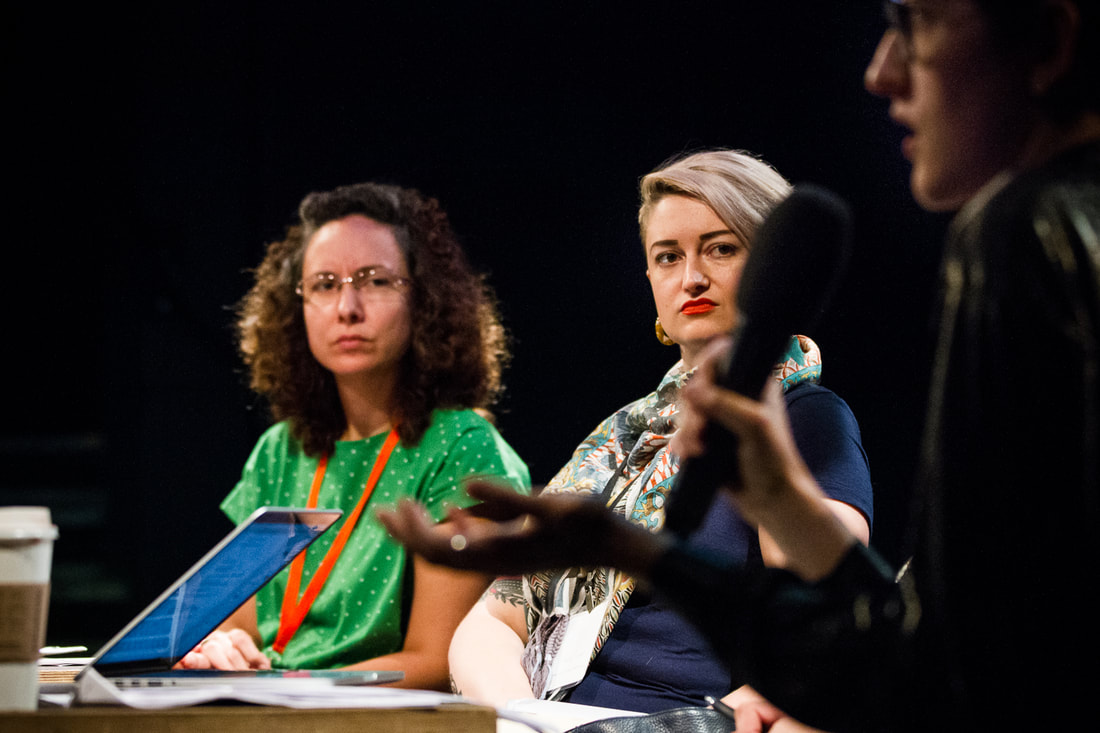|
Last week, I presented some of my dissertation research at Circus and Its Others II in Prague, Czech Republic. Outside of the Circus and Sideshow Culture stream at PCA, there are very few opportunities for American circus researchers to convene around our scholarly interests in the circus and its others. It was truly an honor to be in a room with circus researchers from all over the world and hear their work. My panel, "Freak and Queer," ran on Tuesday morning with Ayal Prousser, Kelly Richmond, and Melissa Camenha Payasa. Payasa discussed the monstrous feminine aesthetics of clowning, Prousser theorized a "bisexual vantage" in circus spectatorship, and Richmond argued for the queer potential in choreographed failure within circus arts. My paper, "Neo-Sideshow and Its Others: The Limits of Freaktopia," is arises from my dissertation research on countercultural aesthetics and identifications with the circus, and argues against a utopic vision of neo-sideshow as a practice and sideshow as a historical form. Some of the theoretical frameworks I presented in this paper are also explored in my forthcoming article, "American Horror Story: Capital, Counterculture, and the Freak," due out March 2019 in the European Journal of American Cultural Studies. Many scholars at Circus and Its Others are also circus practitioners, which I am not. (Although I can juggle!) The majority of scholars at this conference also live in parts of the world with robust circus schools and cultures that value the circus (e.g. Europe, Canada), so they study the circus as an object, as well as specific circuses, through a performance studies and/or cultural studies lens. Although we of course have Cirque du Soleil in the United States, it is the only modern circus outlet that anyone really knows. The traditional American circus is perhaps officially dead with the closing of Ringling Brothers Barnum & Bailey's traveling show earlier this year. I note this to mark a distinction between the kind of circus scholarship I do, and how that is informed in some way by my position as an American scholar with limited access to the circus itself as an object. I primarily study sideshows and freak shows. (I was the only scholar who presented on those topics.) I also study how circuses, sideshows, and freak shows are represented -- not so much as actual objects, although I am interested in tracing the relationship between the neo-sideshow movement and circus aesthetics in contemporary literature and pop culture. In the Circus and Sideshow Culture stream at PCA, we often end up focusing on the "culture" aspect, rather than the objects themselves. I've heard some great research about autobiographies of fat ladies or the sexualization of female sword swallowers in advertising at PCA, but rarely, if ever, a sustained analysis of a particular circus performance. In spending time with European and Canadian researchers at Circus and Its Others, my hypothesis is that American circus research is different because we absorbed the circus as a cultural aesthetic, rather than an entertainment form or a performing art. (While we have numerous schools that teach circus arts, we do not have accredited BFA-granting circus colleges, like Canada and Europe does. This means that circus troupes do not exist to the degree that they do in Canada and Europe. Most American circus, it seems, exists in the cabaret or variety format.) Our proximity to the circus as it is lived and performed today, or rather our lack of proximity to the circus, makes us think of circuses as ideas, rather than real places. It makes the way we research and do circus in the US fundamentally different than our peers abroad.
0 Comments
Leave a Reply. |
Details
AuthorObservations from conferences, talks, etc. Research and publication updates. ArchivesCategories
All
|


 RSS Feed
RSS Feed
